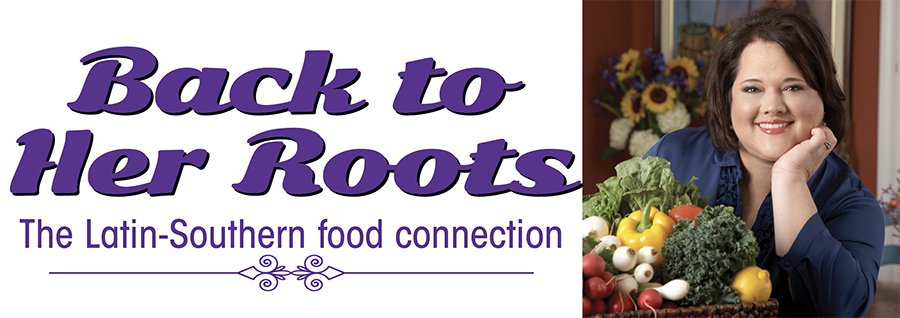

Sandra Gutierrez is world-wise, and it shows in her cooking. She was born in Philadelphia, moved to Guatemala City when she was 5, attended Smith College in Massachusetts, lived in Canada for nine years and eventually settled in North Carolina.
Gutierrez, 50, and her husband, Luis, raised their two daughters in Cary, where she worked as the food editor at the Cary News for almost a decade. She began writing about the commonalities she observed between Latin and Southern cuisine and quickly gained an avid following.
Then, a literary agent approached her about writing books. Gutierrez is the author of four cookbooks: "The New Southern-Latino Table," "Latin American Street Food," "Empanadas: The Hand-Held Pies of Latin America" and, most recently, "Beans and Field Peas: A Savor the South Cookbook."
Food isn't only a career or a passion for Gutierrez – it's also an opportunity to delve into history and culture. She tours the country, giving lessons and promoting her recipes. She has appeared in countless publications and on national food shows. Yet Gutierrez hasn't forgotten her roots, continuing to teach cooking classes at Southern Season, the Triangle's homegrown specialty food and products store.
Following is an edited conversation we had with the busy author as well as five of her recipes for before, during and after Thanksgiving.
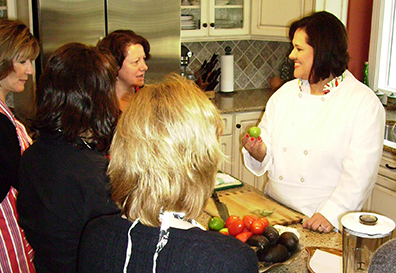 Q: How did you come to be an expert on Latin American and Southern cuisine?
Q: How did you come to be an expert on Latin American and Southern cuisine?
A: I fell in love with food from the South as much as I fell in love with food from Latin America.
Living in Latin America for 13 years, cooking my way around many kitchens, learning to cook from experts, and traveling opened up my palate to the differences between the 21 Latin American cuisines.
I started studying food without really knowing I was studying food when I was very little. My grandmother was a socialite in Guatemala who liked to serve food from all over the world. She had a huge staff in the kitchen. I would hide there when she had large parties. The condition the staff gave was: "You can be here only if you do something." I was 6 years old and already cooking in the kitchen with her chefs.
I fell in love with Southern food from the moment I tried my first pulled pork sandwich. It's hard for someone who loves food and food history to live in an incredible place like the South - which is the first regional cuisine in the U.S. - and not want to learn all there is to learn.
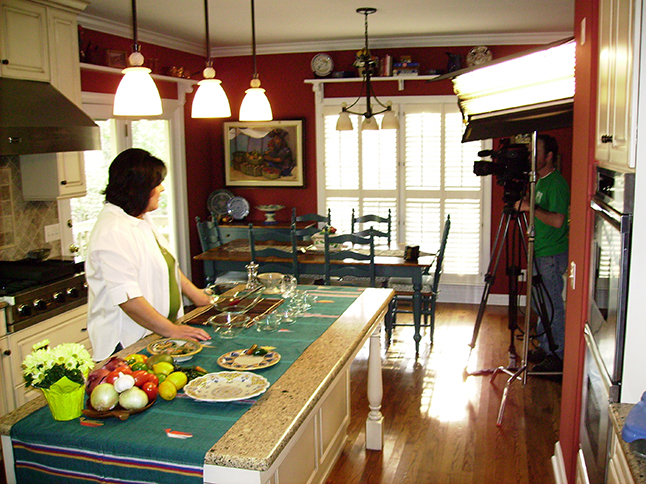 Q: What similarities have you found between these two cuisines?
Q: What similarities have you found between these two cuisines?
A: The first is that we share the same basket of ingredients, meaning the original ingredients we were eating in the Americas (foods like chocolate and nuts and corn and peppers).
The second is the same cooking techniques. We roast, we braise, we stew and, of course, we barbecue. What varies is how we interpret the techniques and the ingredients in combination.
What ties it all together, from Southern regional cuisine all the way down to Brazil, is that we have the same cultural influences. These are: the Native Americans, the same two European groups - the Spaniards and the Portuguese - and the Africans.
Q: How did you decide you wanted to make food your career?
A: I call it "the little career that could" because I married really young and had kids very quickly, so I didn't have a career before. When I lived in Canada, I started teaching cooking classes to friends and neighbors who wanted to learn Latin food.
 Q: How did you become a judge for the James Beard Awards?
Q: How did you become a judge for the James Beard Awards?
A: I was asked to do that. It's one of the best experiences you can have as a writer. It's certainly one of the biggest honors you can have in your career.
To be able to see the beautiful work from so many authors, to be exposed to the food and recipes and stories of so many people, it's very humbling.
Q: What's it like for women in the culinary world today?
A: It has always been harder for women in the field than for men, and in many ways it's still a man's world. But all you have to do is look at the success of female chefs in North Carolina.
It's an interesting and exciting time to be a female in the food business. The glass ceiling is finally being broken.
Q: What tips would you give a home chef?
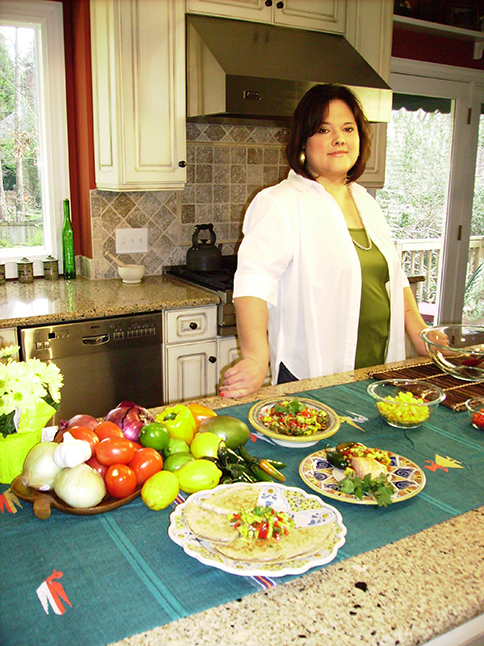 A: I'm not sure there's such a thing as a bad cook. If the recipe is properly written, anybody can follow it. Unfortunately, many of the recipes in books and online aren't tested.
A: I'm not sure there's such a thing as a bad cook. If the recipe is properly written, anybody can follow it. Unfortunately, many of the recipes in books and online aren't tested.
Make sure the recipes you're using have been fully tested.
Read a recipe well before you start cooking and make sure you have all the ingredients.
Don't forget to have fun in the kitchen: Put on nice music, relax, and tackle the recipe as if you're meeting a friend. Find those recipes you're most comfortable with and invite them to your table over and over again.
If you ruin something, order a pizza – it's not the end of the world.
Recipes for before, during and after Turkey Day
Al Forno Clams
These clams and a salad are all I'm prepared to cook the night before Thanksgiving, when time and energy are reserved for making the next day's repast. All you need is a good loaf of crusty bread to sop up the sauce. This recipe doubles and triples beautifully. Delicioso!
40 littleneck clams
1 (15 ounce) can whole San Marzano tomatoes, crushed
2 cups minced white onions
4 large garlic cloves, minced
1 teaspoon red pepper flakes
1 cup Pinot Grigio or another Italian dry, white wine
1/2 teaspoon Kosher salt
1/2 cup butter, diced into ½-inch pieces
1/4 cup minced chives
Freshly ground black pepper
Lemon wedges
Crusty bread
Preheat oven to 450 degrees. Wash the clams under very cold running water, scrubbing them well (use a brush, if needed). Lay the clams in a single layer in one or two non-reactive baking dishes.
In a large bowl, combine the tomatoes, onion, garlic, red pepper flakes, wine, water and salt, stirring well. Pour this mixture, evenly divided, among the clams. Dot clams with butter.
Cover the clams and bake for 6-7 minutes; stir the clams and bake, covered for another 10-12 minutes or until the clams have opened.
Discard any clams that remained closed.
Spoon the clams into shallow soup bowls and divide the broth and vegetables among them evenly. Garnish with chives, freshly ground pepper and lemon wedges. Serve immediately, with plenty of bread to sop up the juices.
Note: Some clams will not open, which is why you need to start with more clams than you think you'll need. If they all open - hey, enjoy them!
Makes 4 appetizers or 2 entrée-sized servings
Pesto and Sun-dried Tomato Crescents
If I had to choose between sweet and savory cookies, savory would win every time. Fill some with basil pesto and others with sun-dried tomato pesto for two different, easy fillings for these appetizer pastries.
3 cups all purpose flour
1/4 teaspoon salt
2 1/4 cups grated Parmigiano-Reggiano cheese, divided
1/2 teaspoon sweet paprika
2 (8 ounce) packs of chilled cream cheese cut into 2-inch cubes
2 sticks unsalted butter, chilled and cut into 2-inch cubes
1/2 cup prepared basil pesto
1/2 cup prepared sun-dried tomato pesto (or sun-dried tomato tapenade)
1 cup toasted pine nuts, coarsely chopped
In the bowl of a food processor fitted with the metal blade, combine flour, salt, 1/4 cup Parmigiano and paprika; pulse for 20 seconds to combine. Add the cream cheese and butter and pulse until mixture comes together into a ball. Divide mixture into 4 equal parts; shape each into a disc, wrap in plastic and chill for 30 minutes.
Preheat the oven to 375 degrees. Working with one disc at a time, roll each disc into a circle (12 inches in diameter). Spread 1/4 cup of either basil pesto or sun-dried tomato pesto on each disc; sprinkle with 1/4 of the cheese and 1/4 of the pine nuts.
Using a pizza cutter, slice each circle into 16 wedges (first cut it in half, then into fourths, then into eighths, and finally into sixteenths).
Starting at the outside of the wedges, roll them into the center, forming crescents.
Place the crescents onto cookie sheets lined with parchment and chill for 5 minutes in the fridge; bake them for 10-15 minutes or until they are nicely golden.
Note: Freeze these, unbaked, for up to 2 months; there is no need to thaw - simply add 5-7 minutes more baking time.
Makes about 60 crescents
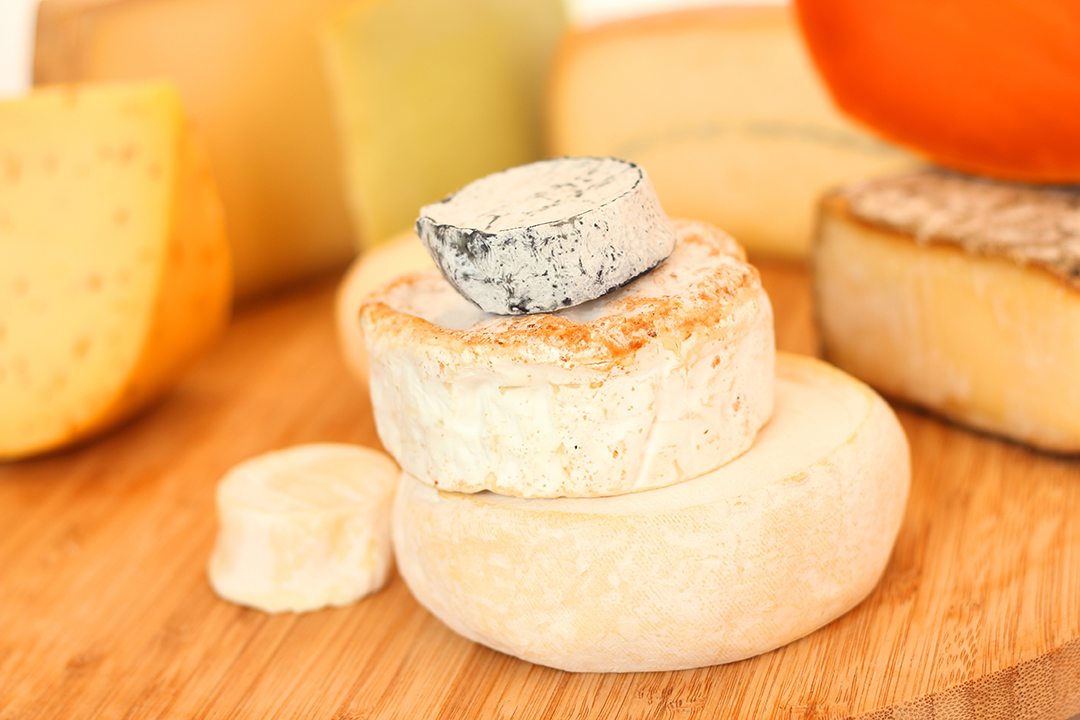 Homemade Boursin Cheese
Homemade Boursin Cheese
Why purchase it when you can make it yourself? My rendition is simple to create. Serve it with crudités, crisps or crackers. This is one recipe you'll want to keep at hand for easy entertaining!
2 (8 ounce) packages Neufchatel cheese, softened
1/4 cup heavy cream
2 minced garlic cloves
1 tablespoon minced fresh thyme
1 tablespoon minced fresh rosemary
1 tablespoon minced fresh tarragon
1 tablespoon minced fresh chives
1/2 teaspoon freshly ground pepper
Salt to taste
Place all ingredients in a food processor; pulse until they're combined thoroughly and form a smooth mass. Taste for salt. Remove mixture from the processor and transfer it into a bowl; chill until ready to use.
Makes 2 cups
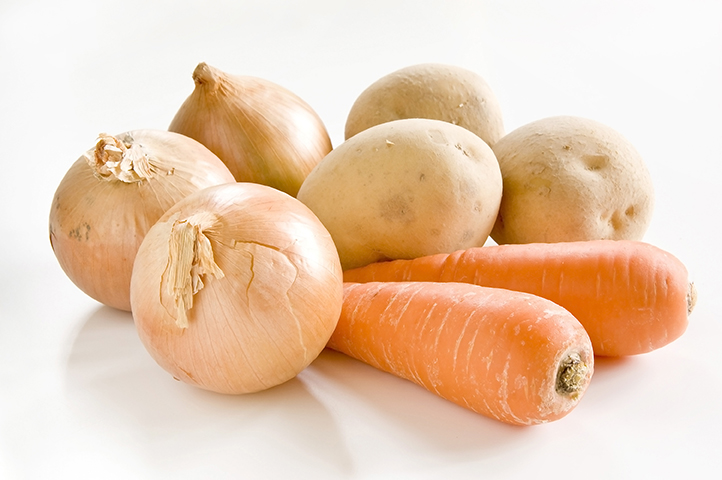 Carrot and Potato Potage
Carrot and Potato Potage
I love to start Thanksgiving dinner with a delicious soup. This one can be made days ahead and frozen, but do not add the cream until you're ready to serve.
1 tablespoon unsalted butter
5 cups chopped leeks
2 cups chopped onion
10 cups chopped carrots
5 cups chopped Yukon gold or russet potatoes
8 cups chicken stock (or broth)
2 teaspoons salt, or to taste
1/2 teaspoon pepper, or to taste
1/2 cup mascarpone cheese
In a large stockpot, melt the butter over medium-high heat. Add the leeks and onion, sautéing for 3-4 minutes or until softened. (Make sure they do not take any color).
Add the carrots, potatoes, chicken stock, salt and pepper. Bring liquid to a boil; lower heat and cover, simmering soup until the vegetables are very soft (25-30 minutes). Cool soup.
Working in batches, puree soup in a blender and return to the pot; reheat the soup. Ladle the soup into bowls and top each with a generous teaspoon of mascarpone cheese. Serve immediately.
Makes 10-12 servings
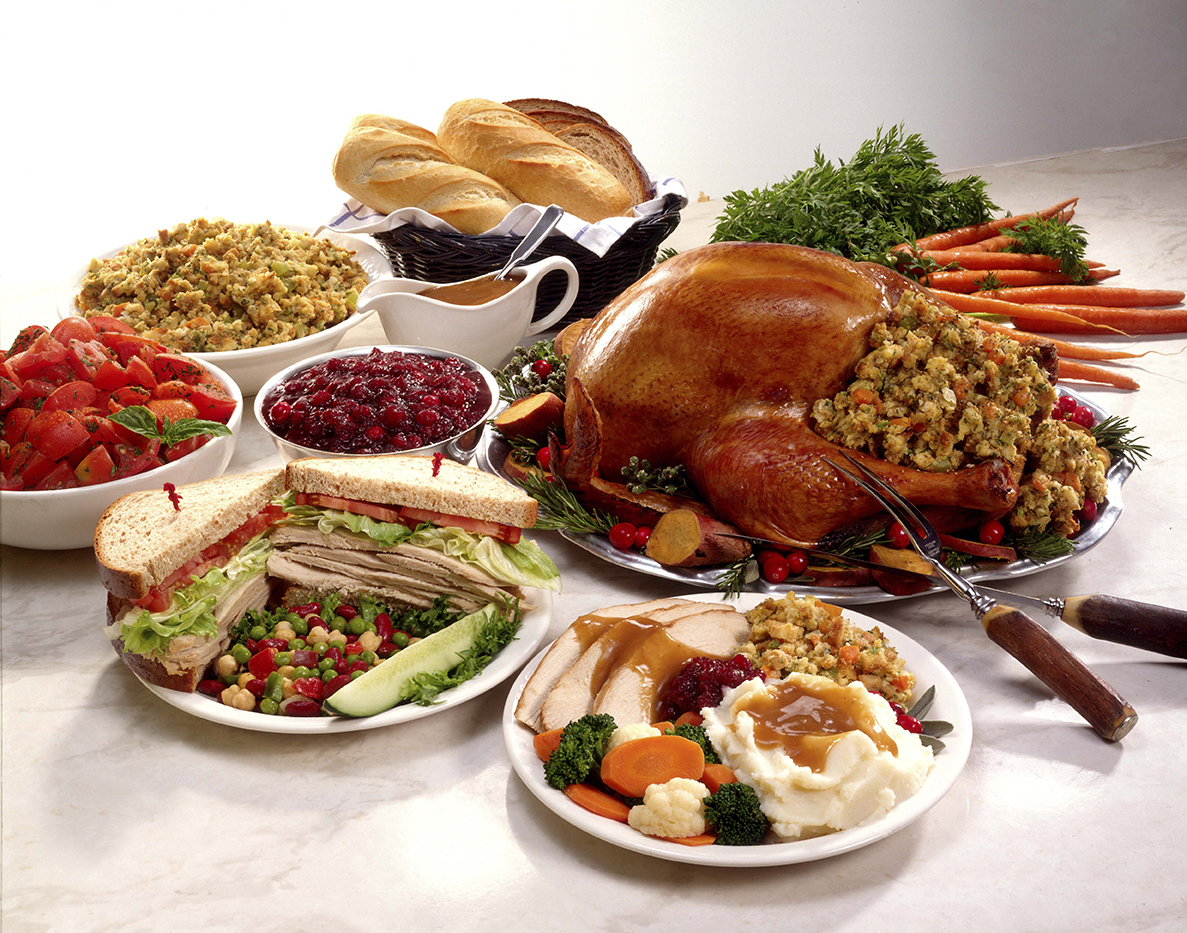 Leftover Turkey Panini with Garlic Mayonnaise
Leftover Turkey Panini with Garlic Mayonnaise
"Panini" is the plural of "panino," and these sandwiches are the perfect vehicle for that leftover Thanksgiving turkey! The measurements here are only a guide. Make your sandwich as thin or thick as you like.
For the garlic mayo:
1/2 cup extra virgin olive oil
5 large garlic cloves, peeled
1 1/2 cups mayonnaise
In a small saucepan, place the olive oil and garlic; heat slowly, bringing it up to a gentle simmer; simmer, turning garlic over occasionally until the garlic is golden.
Remove the garlic from the oil (reserving the oil for later in the recipe) and cool; when cool enough to handle, mash the garlic well and place it in a bowl. Add the mayonnaise and mix them until well combined.
For the panini:
1/2 cup reserved garlic oil
Thinly sliced roast turkey
1 cup roasted red peppers (drained, if jarred)
1 medium sweet onion, thinly sliced
12 slices whole grain bread
12 slices Havarti or Swiss cheese
Roasted garlic mayonnaise
Place six slices of bread on a large cutting board. Spread the top of each slice with the garlic mayo and one slice of cheese. Top each with turkey, pepper and onion and finish with another slice of cheese; top with the other slice of bread and brush the bread with oil.
Oil the base of the panini press with more oil and place the panini in the press (follow your panini maker's instructions). Press the sandwiches until the cheese has melted. Cut and serve immediately.
Makes 6 panini
All recipes used with permission of Sandra A. Gutierrez © All Rights Reserved; 2015